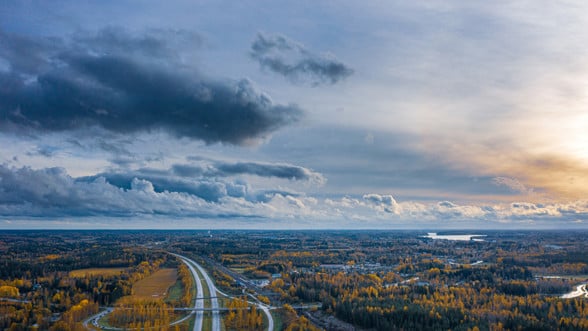A power grid operator on the other side of the Atlantic, in Texas, experienced two extreme weather events in the span of half a year. In winter 2021, the polar vortex brought extreme cold from the North Pole as far south as Texas, freezing both coal piles and gas turbines, in turn disrupting the company’s electricity supply. People froze to death. During a heat wave in June 2021, the same company urged its customers to lower their air conditioning so as not to overload the electricity network and to avoid power outages.
The events in Texas are an example of the global warming impacts that even investors have been trying to prepare for in recent years. Investment portfolios have started to model climate-related risks in a number of ways. In their analyses of the semiconductor market’s supply shortage, investment banks, for example, have included comments to the effect that Taiwan has not had enough typhoons to maintain the country’s water reservoir levels. In summer 2021, analyses have also included deliberations on coffee beans, as Brazil has been experiencing frost, as well as considerations of the risks that both real estate and other infrastructure have been exposed to due to the floods in Germany and China.
Whereas the impacts of climate change have already partly cleared a path to companies’ cash flow analyses, we are still light years away from taking the importance of biodiversity into account in equity analyses. High-level analyses indicate that more than half of the global gross domestic product is either partly or largely dependent on nature, which is why investors, too, should think about biodiversity.
But how can, say, high stumps, nest holes and willow tits be discounted in a cash-flow analysis? High stumps are man-made, standing tree stumps that are left to decay in the forest, as wind-felled stumps are a rare occurrence these days. The stumps begin to decay after a few years, at which point woodpeckers and tits can begin making nest holes in them. Willow tits in particular are highly threatened, as they are unable to find food in felled forests. High stumps and willow tits reinforce biodiversity, but the manner in which they financially affect forest owners and the national economy as a whole is absent from many calculations.
A single commensurable metric for natural capital or biodiversity is unlikely to be found, but that is no reason not to take the matter forward.
In order for high stumps and willow tits to be taken into account in analyses in the future, natural capital metrics must be devised for them. There are expectations that such metrics could be launched at the UN Biodiversity Conference to be held in Kunming, China, in October. Although the world is hardly likely to be ready for it even after that, perhaps investors will move forward in the debate about whether, for instance, the threatened willow tit should be modelled in the value chain and if yes, how? A single commensurable metric for natural capital or biodiversity is unlikely to be found, but that is no reason not to take the matter forward.
